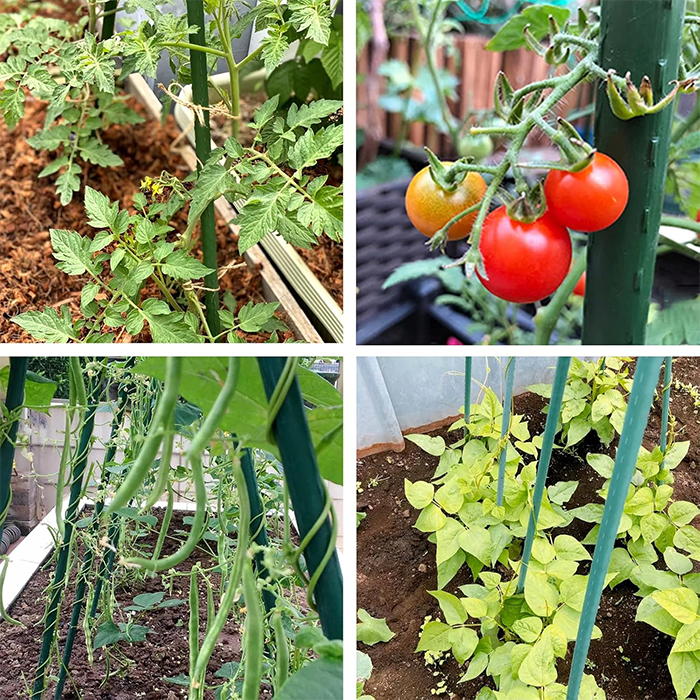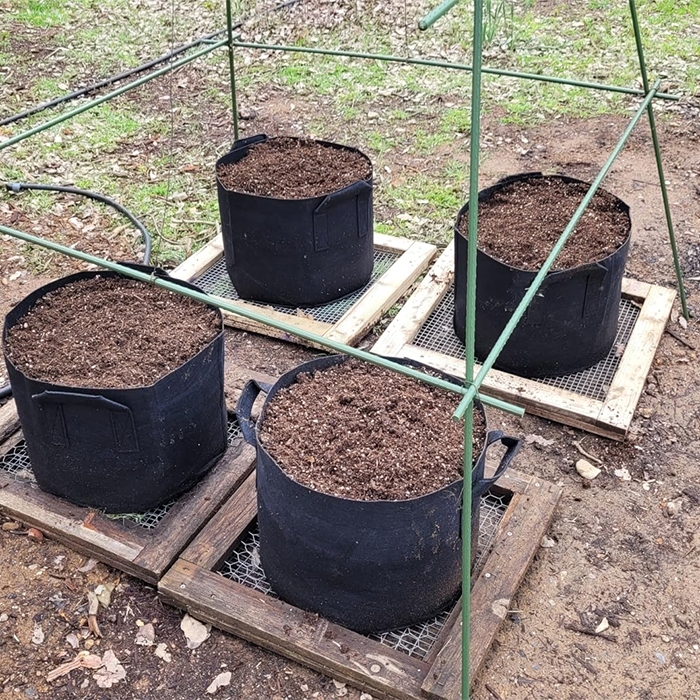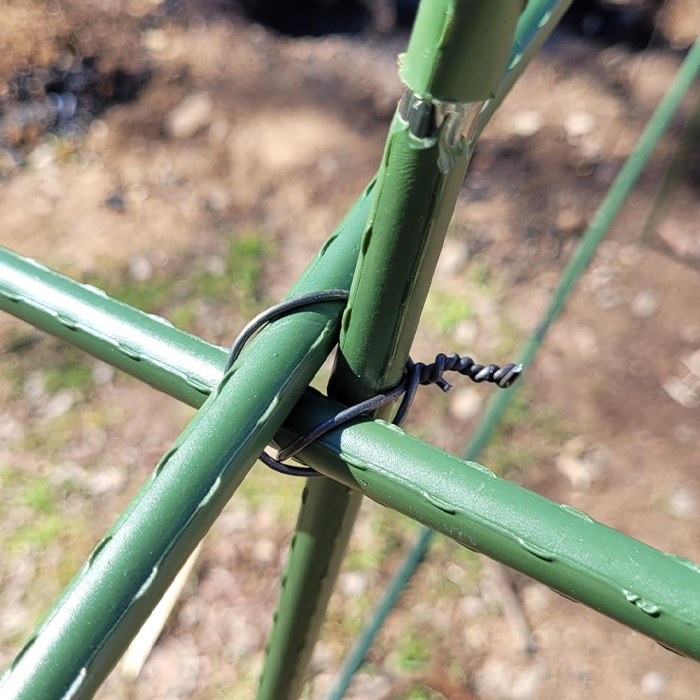The appropriate support rods can help plants grow healthily, increase yields, prevent diseases, and beautify the garden landscape.
When making a choice, you need to consider several aspects in a comprehensive manner, just like a doctor diagnosing a patient:
Key Considerations
1. Characteristics of the plants themselves (the very important factor)
Plant height and weight:
- Short and lightweight plants (such as herbaceous flowers, succulents): A short and slender support pole will suffice.
- Tall and heavy plants (such as tomatoes, sunflowers, and large hydrangeas): Require sturdy, deeply inserted support poles, such as thick bamboo poles or metal poles.
Growth habits:
- Vertical type (such as freesias, lilies): Supported by a single straight stem.
- Prostrate/Expanding Type (such as peonies, dahlias): Requires the use of support rings/support frames to surround and hold up from all sides.
- Vining type (such as beans, cucumbers, climbing roses, clematis): Requires a three-dimensional climbing frame, such as a grid, trellis, tower-shaped frame or cables.
2. Materials of the support rods
Different materials determine the lifespan, appearance and load-bearing capacity of the support rods.
3. Aesthetics and Coordination
- The support rods are also part of the garden landscape.
- Visible vs. Concealed: For displaying flowers, you can choose green-coated, brown or natural wood-colored support rods to blend them into the plants. For a stylized garden, the design-oriented metal frames themselves can serve as decorations.
- Uniform style: Japanese gardens use bamboo poles, modern flower beds use metal straight lines, and rural styles use wooden stakes.
4. Budget and Lifespan
- Short-term/annual plants: Select economical bamboo poles or plastic poles.
- Perennial plants / fruit trees: It is recommended to invest in durable metal or thick, anti-corrosion wooden support poles for a long-term solution.
Practical Tips and Precautions:
- Pre-installation: "Preparation before action." Installing the support poles during the early stage of plant growth or in the early spring can prevent damage to the roots and branches later on.
- Choose gentle binding materials: Use specialized gardening ties, soft twine, hemp ropes, etc. Avoid using iron wire or hard wires to prevent them from causing damage to the stems as the plants grow larger.
- Binding technique: When binding, some space should be left. Make an "8" shape to allow the plants to have room to sway and grow, rather than binding them tightly.
- Check stability: The support rods must be inserted deep enough into the soil to ensure that they will not collapse even in strong winds or heavy rain.


 Summary:
Summary:
Choosing the plant support rods is a comprehensive decision-making process. First, consider the plant requirements (height, weight, habits), then look at the material lifespan, and finally consider aesthetics and budget. Investing in the appropriate "framework" for your plant garden not only allows you to have healthier and more flourishing plants, but also enables you to make your gardening work more efficient and enjoy a tidier and more beautiful garden scenery.

 英语
英语 俄语
俄语 德语
德语 西班牙语
西班牙语 法语
法语


.jpg?imageView2/2/w/800/h/800/format/webp/q/75)
.jpg?imageView2/2/w/800/h/800/format/webp/q/75)
.jpg?imageView2/2/w/800/h/800/format/webp/q/75)
.jpg?imageView2/2/w/800/h/800/format/webp/q/75)
.jpg?imageView2/2/w/800/h/800/format/webp/q/75)

-1.jpg?imageView2/2/w/800/h/800/format/webp/q/75)
.jpg?imageView2/2/w/800/h/800/format/webp/q/75)
-1.jpg?imageView2/2/w/800/h/800/format/webp/q/75)
.jpg?imageView2/2/w/800/h/800/format/webp/q/75)
-1.jpg?imageView2/2/w/800/h/800/format/webp/q/75)
-1.jpg?imageView2/2/w/800/h/800/format/webp/q/75)
